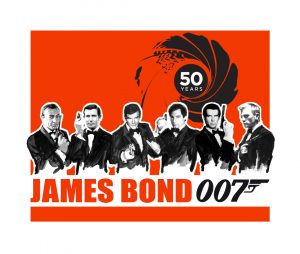Seven or eight years ago, most people only visited YouTube to watch the latest viral video and, as a vlogger, bringing in one thousand subscribers was a miracle. You could set up a camera in your bedroom and, if you had new and interesting content, you could create a fanbase. But nowadays, successful YouTubers have over 5 million subscribers and make upwards of $1 million per year. With this sudden influx of popularity the YouTube community is moving away from the “Do-It-Yourself” stardom of the past towards a more traditional form of media.
Right now the YouTuber with the most subscribers is a Swedish gamer known as PewDiePie. He has 31,801,268 subscribers, an audience bigger than the entire population of Australia. Other top ranked YouTubers like Jenna Marbles and Ryan Higa have racked up more modest followings of around 14 million and 13 million respectively. At this year’s Vidcon, a YouTube convention held by in Anaheim, California, the 18,000 fans that showed up for the three-day convention were evidence of this marked change in the YouTube community. Many YouTubers were unable to leave their hotel rooms save for scheduled appearances due to security concerns. The lax meeting of 1,400 online video enthusiasts from the first Vidcon was no longer.
With this rise in views, advertisers and retailers have jumped at the chance to cash in. Most profitable YouTubers are sponsored by audible.com, an Amazon run online audiobook bookseller, and now many YouTubers have signed book deals themselves. Alfie Deyes, of Pointless Blog, Grace Helbig, formerly of DailyGrace and now ItsGrace, and Hannah Hart of MyHarto have all come out with books within the past year. Publishers have seen the built-in audience and free advertising provided by their YouTube channels and made a move. In addition to books, beauty vloggers like Zoe Sugg and Bethany Mota have make-up and clothing lines, only adding to their sphere of influence.
However, the biggest signal boost YouTube has received in the past year has been through traditional media. Most recently, Fox’s Teen Choice Awards included categories such as Choice Web Star and Choice Web Collaboration, and Bethany Mota was a contestant on ABC’s Dancing with the Stars. YouTube itself has started promoting its channels, creating ads for channels like Hank Green’s Sci Show that appear on buses, metro stops, and during the premiere of The Walking Dead. With endorsements like these what hope does someone armed only with a web camera have anymore?
When I started watching YouTube videos, users like Hank and John Green, a.k.a The Vlog Brothers, and WheezyWaiter, a peculiar bearded man making videos with impeccably edited ‘clones’, drew me to them for their wit and humor. Now, Youtubers such as the members of Our Second Life or O2L, a vlogging collective made up of five boys, are treated more like movie stars than video makers. The starkest examples of this new wave of YouTuber are the creators from the British talent agency Gleam Futures. These British creators, including Zoe Sugg (Zoella), Joe Sugg (ThatcherJoe), Casper Lee, and Alfie Deyes (PointlessBlog), have helped move YouTube into a new age by appearing in magazines and on movie premiere red carpets. Long gone are the days of do-it-yourself stardom through YouTube. Working through a talent agency or being pretty and/or foreign seems to be the only way to attain real success anymore. So unless you’ve got a cute British accent lying around or a time machine, you’re probably out of luck.






You could always write for a comedy group or find your niche market and use youtube as a stepping stone into mass media. (SMOSH, Good Neighbor, Workaholics)